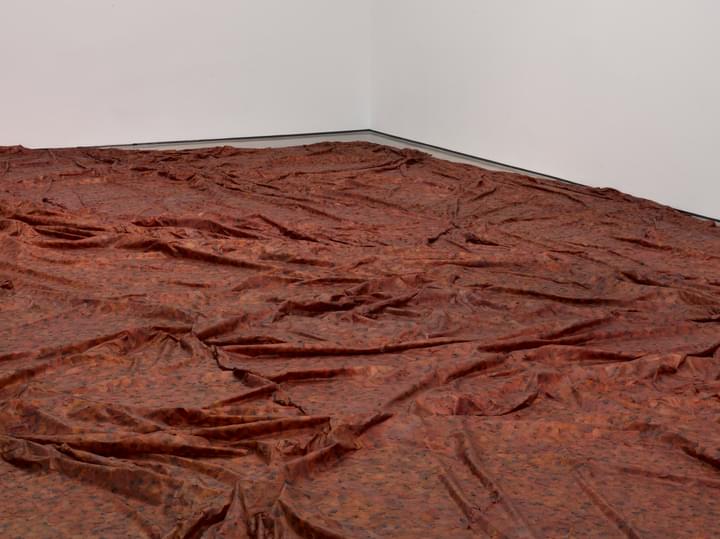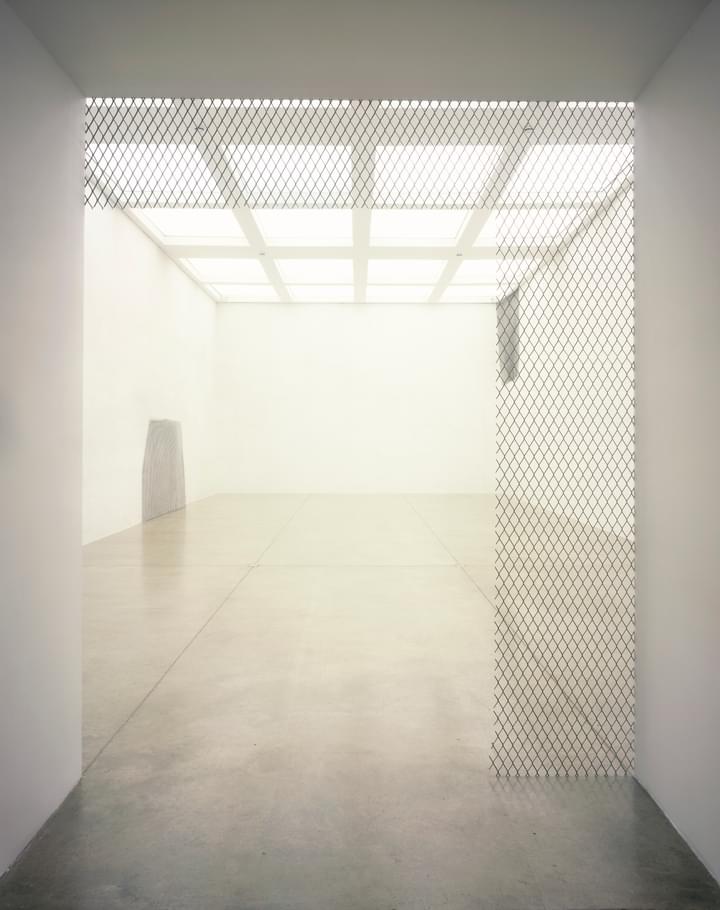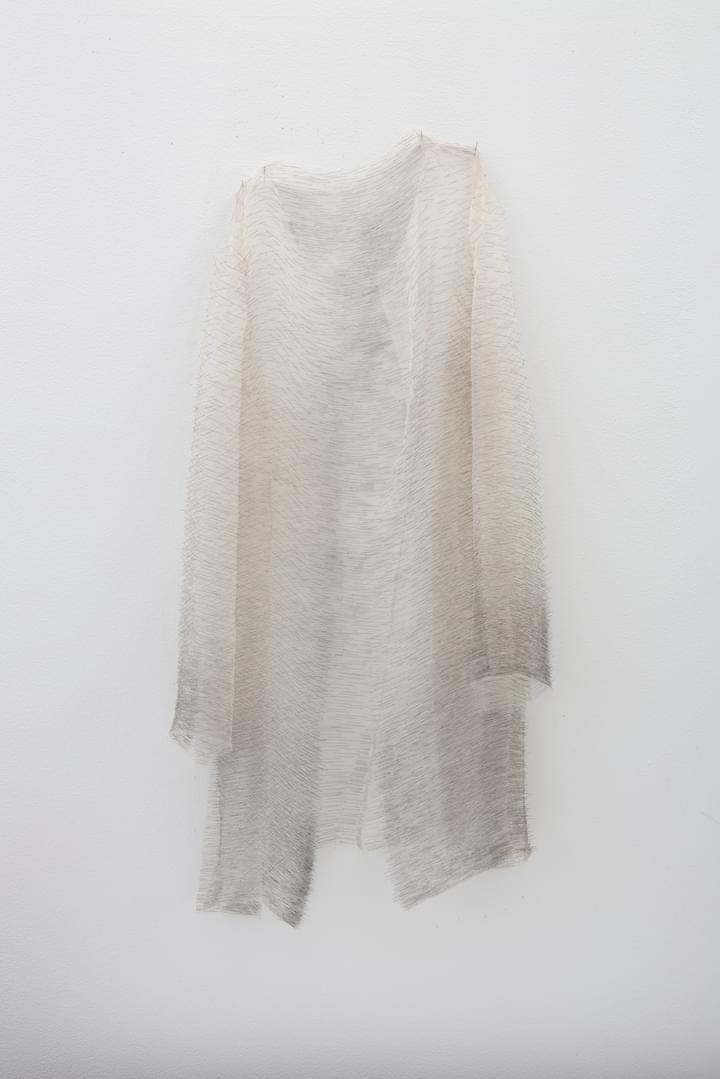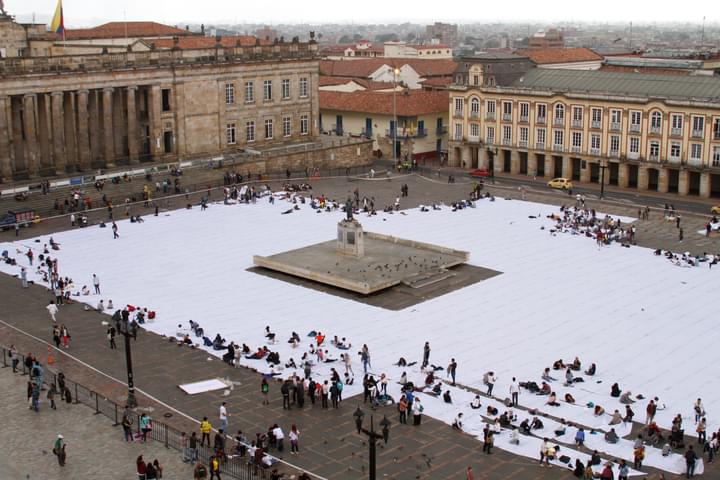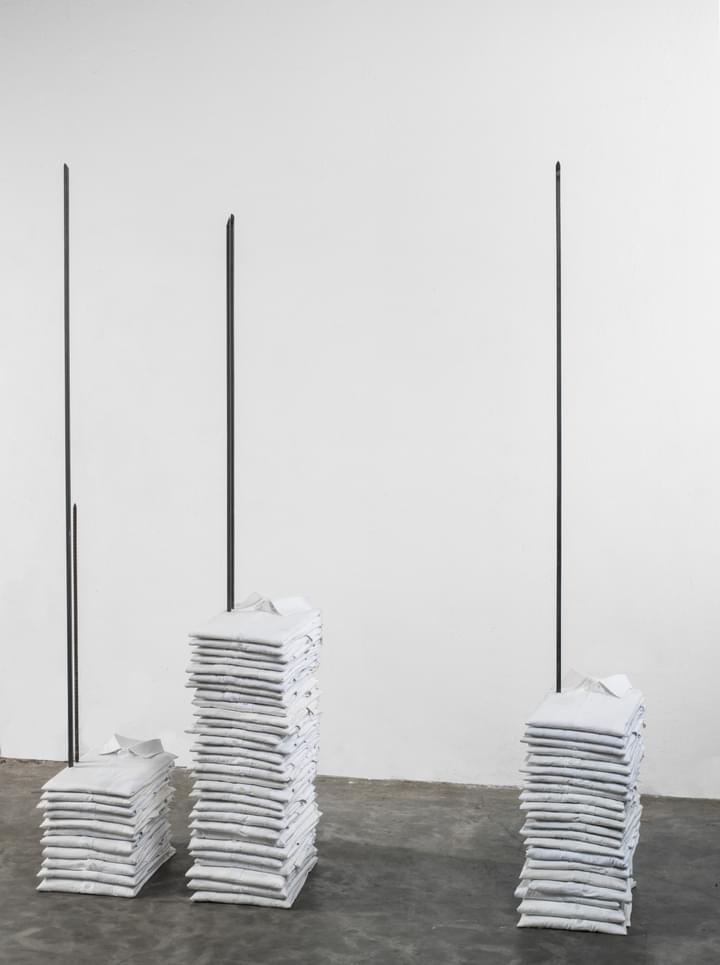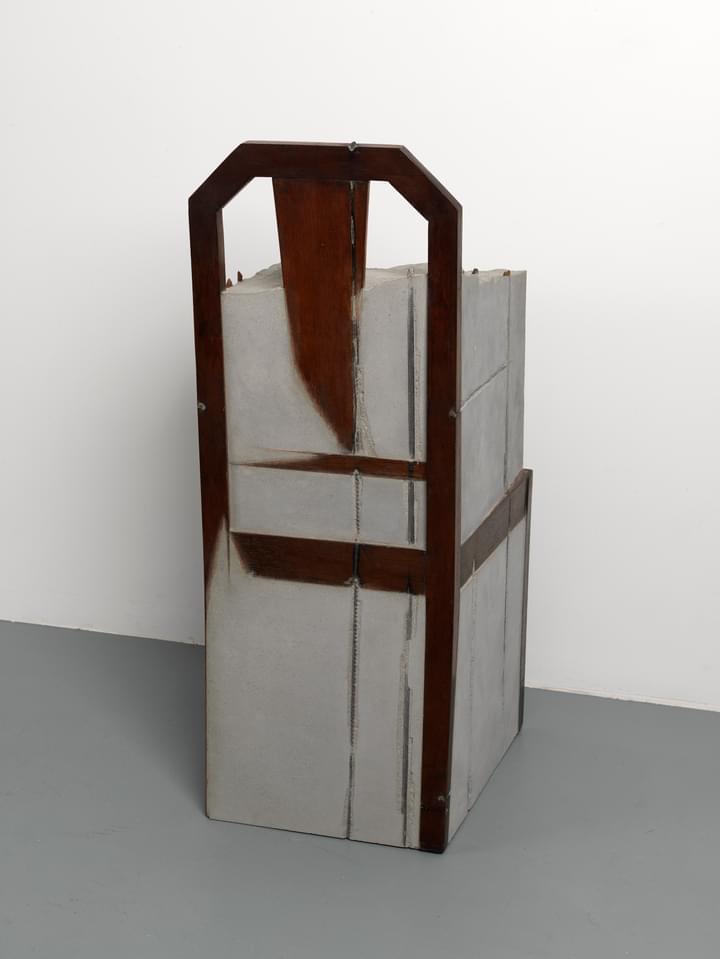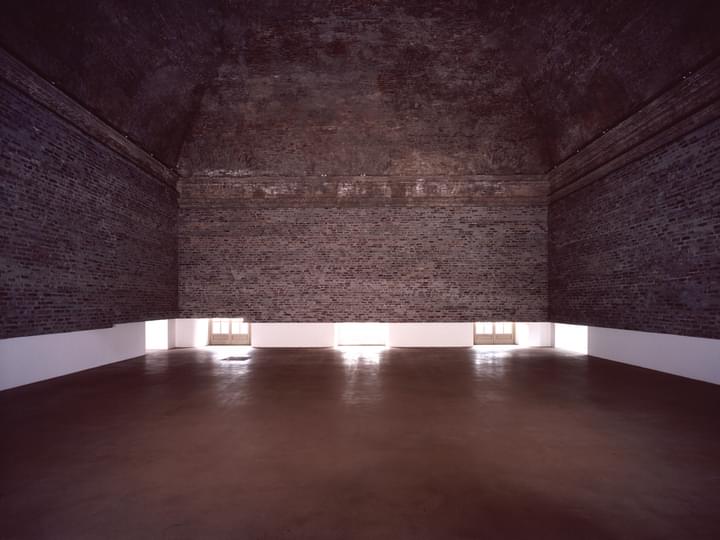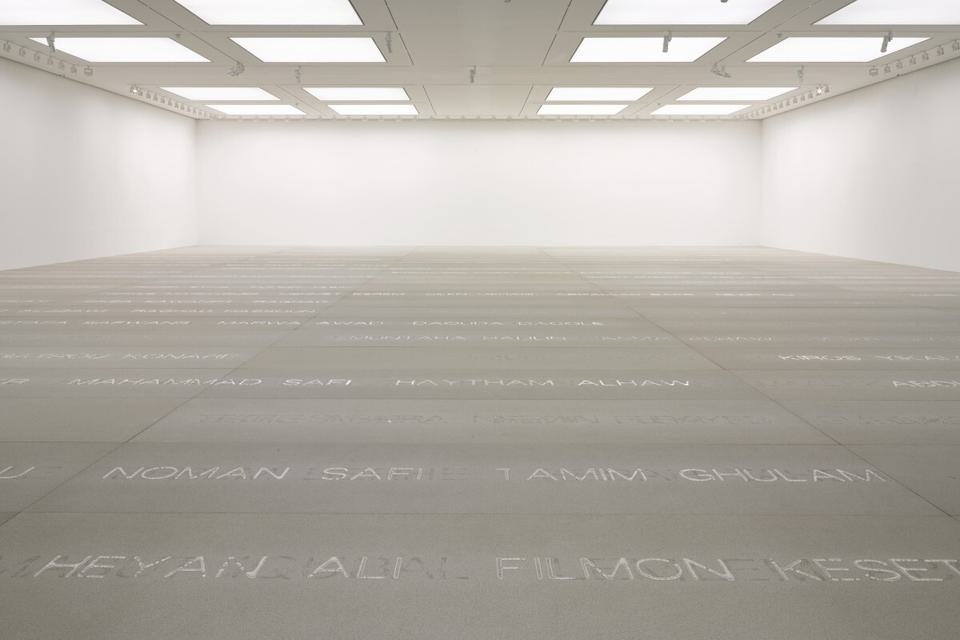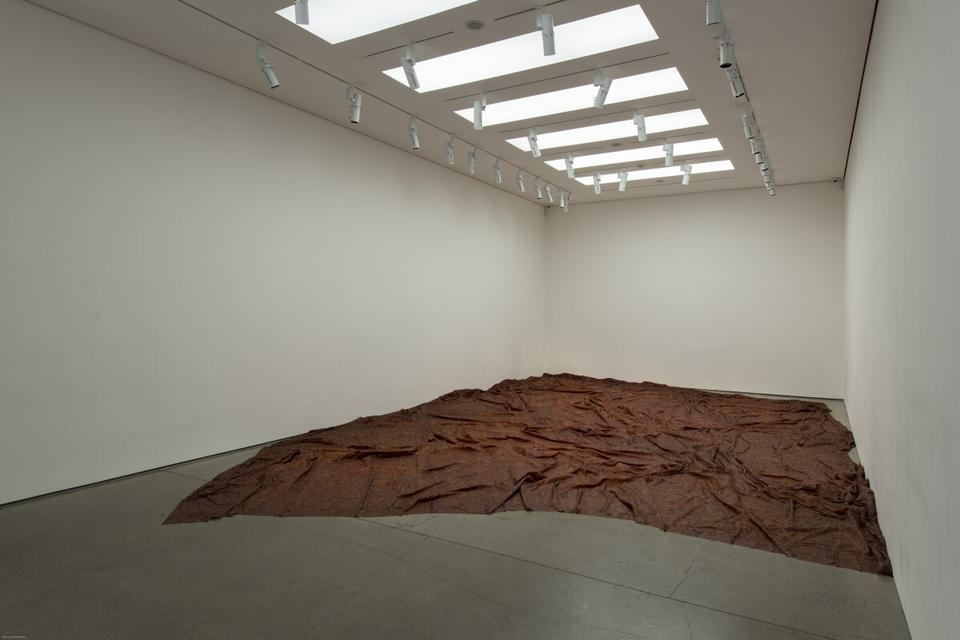Living and working in Bogotá, Salcedo draws on her own experience of Colombia’s violent political history, as well as responding to wider global concerns. She focuses on those who have disappeared or are politically invisible - the most economically vulnerable and marginalised members of society that suffer ‘social death’. Reflecting on a contemporary human condition scarred by war, migration, economic challenges and personal loss, the artist’s practice is further informed by a deep engagement with philosophy, literature and poetry. For Salcedo, the writings of Jean-Luc Nancy, Franz Kafka, Jorge Luis Borges and Paul Celan are particularly resonant, situated as they are by the primacy of the captive body, and biopolitical technologies of the state: ‘life as such becomes the stakes of politics’.
Beginning her career in the 1980s, Salcedo’s early work is characterised by its quietude, visceral materiality and inclusion of organic matter such as hair or bone, and worn fabric. Starting all of her projects with an intensive period of research undertaken over several years, as well as extensive exploration into materials and sculptural processes, Salcedo makes pain-staking attempts to address ‘the impossible’ in her work. The installation Atrabiliarios (1992–2004), for example, was developed in response to the disappeared people by the state, and the unbearable conditions women had to endure during their captivity and disappearance. Comprised of a series of small niches inset into the wall, each houses pairs or single mostly women’s shoes visible behind translucent animal skins, which have been sutured in place with surgical thread.
Salcedo’s La Casa Viuda (1992–95) loosely translates to ‘the widowed house’, and deals with the subject of forced displacement of Colombian women seeking safety. In it, doorframes and other fragments of furniture are forcibly conjoined in inter-locking configurations, and may be variously embellished with used clothing or a child’s toy. Approaching figuration in a non-classical sense, Salcedo makes tangible the absent body by invocations of human presence as part of a unique poetic strategy. She frequently returns to furniture or other household items as part of her repertoire of materials, as the artist states: ‘Sculpture is its materiality. I work with materials that are already charged with significance, with a meaning they have acquired in the practice of everyday life.’ Her 20-year long series ‘Untitled’ addressing the genocide of a political party in the context of the Colombian civil war, notably, involves sculptures made up of merged wooden wardrobes, dressers, beds and chairs whose negative spaces have been filled with poured cement. Transformed into unsettling, dislocated assemblages, the ‘Untitled’ works speak of trauma, entombment and the grave interruptions war imposes on ordinary domestic affairs.
Salcedo’s works are the result of labour-intensive processes requiring extreme precision; they are always undertaken in collaboration with her studio or experts from other disciplines, and constitute a collective endeavour that becomes integral to the meaning of the work. This is most pronounced in installations such as Plegaria Muda (2008-10), A Flor de Piel (2014) and Palimpsest (2013-17). Eliciting the image of a mass grave, Plegaria Muda consists of austere, coffin-like wooden tables, oriented surface to surface with a thick layer of soil between them, through which sprout young blades of grass that are carefully tended to. Palimpsest combines many of the artist’s most pressing concerns in a major installation that elegiacally confronts collective amnesia. An anti-monument taking the form of an open plaza, the work is formed of giant ground marble slabs which, in tiny pearls of water, spell out the names of refugees who lost their lives crossing the Mediterranean passage. In a constant cycle of inscription and erasure, the names of each individual person appear and disappear, to then again well up like tears. Another floor-based installation, A Flor de Piel was conceived of in relation to the torture, mutilation and death of a female nurse in Colombia, the events of which Salcedo was researching. An offering to the victim and others affected by violence, hundreds of specially treated rose petals were delicately sewn together to create a blood-red shroud.
Salcedo’s large-scale public projects are formulated as an instance of collective mourning. Set within civic spaces, they propose an opportunity for the expression of loss and call for the shared responsibility of remembrance, aspects of mourning essential to the possibility of reparation. Noviembre 6 y 7 (2002), which took place over the course of 53 hours, saw 280 wooden chairs lowered from the roof of the Colombian Palace of Justice in Bogotá, a symbolic statement made to mark the anniversary of the two-day siege and massacre by the M-19 guerrilla and the Colombian army in 1985. While Untitled (2003), a site-specific installation presented at the 8th International Istanbul Biennal, comprised 1,550 wooden chairs stacked between two buildings on an empty lot to create a topography of war. Acción de Duelo (2007) and later Sumando Ausencias (2016), both of which took place in Bogotá’s Plaza de Bolívar, were actions developed in immediate response to specific current events that resulted of Colombia’s ongoing armed conflict and political turmoil.
In 2007, Salcedo was invited to create an installation in the Turbine Hall of Tate Modern, London, as part of the Unilever Series. For this project, she produced Shibboleth, a deep crack in the very floor of the main concourse of the building, rendering both the architecture of the museum – and by extension its metaphorical framework – split. Also intervening in the very fabric of its site is Salcedo’s Abyss (2005), an equally epic work created for Castello di Rivoli, Turin, Italy. This palpably oppressive installation extended the ceiling of one of the galleries, such that the brickwork cascaded over certain of the windows and entrances, shutting out most of the daylight as if by lowering curtains.
The recent installation Uprooted (2020-22), created for the 2023 Sharjah Biennial, addresses the increasingly uninhabitable nature of the world, the differential effects of climate change and the forced migration related to it. It features over 800 dead trees carefully placed to give shape to an archetypal house, but without doors or windows – a building of ‘pure exteriority’ that offers no possibility of shelter.
Doris Salcedo was born in Bogotá, Colombia in 1958 where she continues to live and work. Her solo exhibitions include Fondation Beyeler, Basel (2022); Glenstone, Travilah, Maryland (2022); Kunsthalle St. Annen, Lubbeck, Germany (2019); Irish Museum of Modern Art, Dublin (2019); Palacio de Cristal, Museo Nacional Centro de Arte Reina Sofía, Madrid (2017); Harvard Art Museums, Massachusetts (2016); Nasher Sculpture Center, Dallas, Texas (2016); Museum of Contemporary Art Chicago, touring to Solomon R. Guggenheim Museum, New York and Pérez Art Museum, Miami (2015–16); Hiroshima City Museum of Contemporary Art, Japan (2014); Museo Universitario Arte Contemporáneo, Mexico, touring to Moderna Museet Malmö, Sweden, Calouste Gulbenkian Museum, Lisbon, Museo nazionale delle arti del XXI secolo, Rome, White Cube, London and Pinacoteca do Estado de São Paulo (2011–13); Tate Modern, London (2007); Camden Arts Centre, London (2001); Tate Britain, London (1999); and New Museum, New York (1998).



